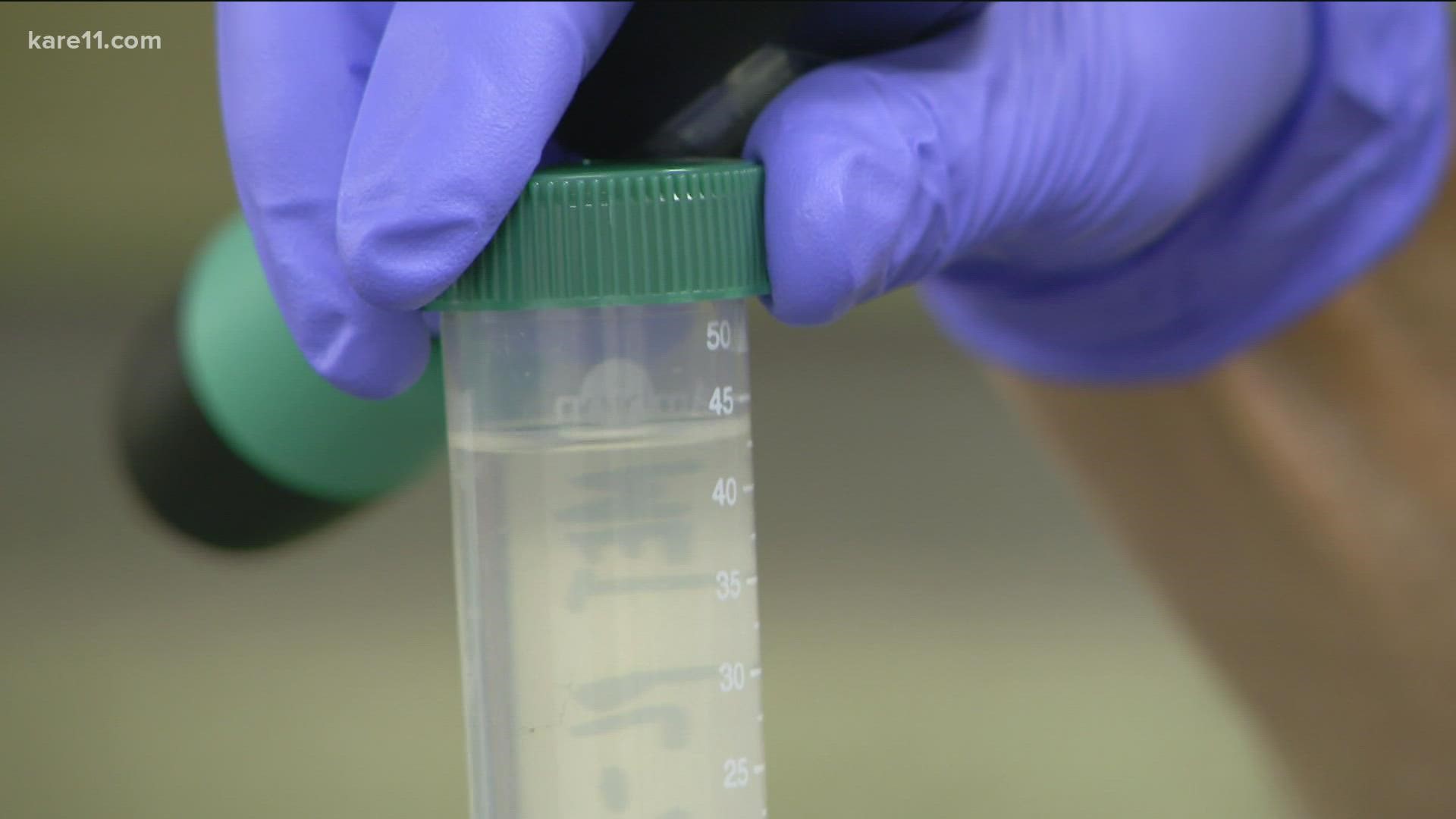ST PAUL, Minn. — EDITOR'S NOTE: The video above originally aired in August 2021.
The Metropolitan Council said it is detecting a slight increase in COVID-19 levels in wastewater in the Twin Cities metro area for the first time in more than two months.
According to data shared on social media, COVID-19 levels flowing into the St. Paul Metro Plant on March 21 were up 15% compared to the previous week. It's the first increase detected in metro wastewater since early January, at the peak of omicron variant infections in the state.
The Met Council said overall virus levels remain low; however, levels of the BA.2 subvariant are rapidly increasing, now detected at levels four times higher than two weeks ago.
Wastewater testing shows omicron remains the dominant variant, according to the Met Council.
The Met Council began tracking COVID-19 in wastewater early in the pandemic, taking samples from the Metro Plant in St. Paul, then partnering with the University of Minnesota's Genomics Center to study the prevalence of COVID-19.
Last summer, Steven Balogh, a research scientist at the Metropolitan Wastewater Plant in St. Paul, told KARE 11's Breaking the News that 1.95 million people send the plant their wastewater every day. "All of our treatment plants collect a daily, 24-hour, composite sample, so we know what's coming into our plant. We see the whole picture," Balogh said.
Similar testing has also been happening in a large portion of wastewater facilities across the state during the last year, thanks to the network developed by the University of Minnesota Medical School.
"We're sampling 65% of the population of the state twice a week with this technique," said Dr. Tim Schacker, vice dean of research for the University of Minnesota Medical School.
Wastewater sampling helped the University of Minnesota and the Minnesota Department of Health track the emergence of the delta variant more than a week before it showed up in testing last summer. Earlier this year, the sewage data helped chart the rapid rise of the omicron variant.
The wastewater tracking data is available to view online.
Watch more on the coronavirus:
Watch the latest reports and updates on the coronavirus pandemic in Minnesota with our YouTube playlist:

